During the 1971-1972 school year, Colorado Academy chose A Midsummer Night’s Dream as the Upper School Play. Without any prompting, Terrie Dickinson Warren ’73, who played the character Helena, can still recite all her lines—50 years later.
Call you me “fair”? That “fair” again unsay.
Demetrius loves your fair. O happy fair!
Ann Clinger Bley ’72 had a grand total of three lines, and she also can remember them like the performance was yesterday: “Hail! Mustardseed! Where shall we go?”
Bley still laughs at her mother’s reaction when she saw her daughter’s thespian efforts. “She said, ‘You needed to practice six weeks for that?!’”
Remembering your high school performance is one accomplishment. But what really made this play memorable is the fact that it was the first major production with CA girls cast in female roles. For decades, CA had been an all-boys military academy and then an all-boys boarding and day school. But times were changing. Starting in fall 1971, Head of School Chuck Froelicher decided to transform the school into a coed institution, with 25 girls enrolled in Grades 10-12. The Class of 1972 had seven female graduates out of a class of 42.
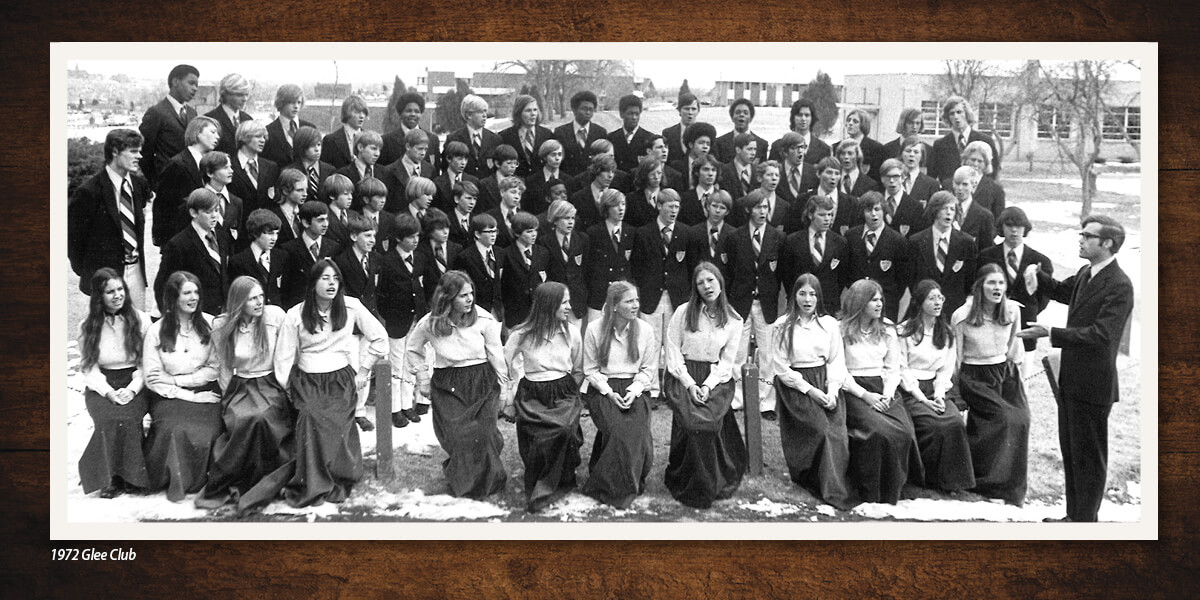
“Chuck was a real visionary,” says Bill Sims, who served as the Chair of the History Department during the era that girls first arrived at CA. “Everyone realized that becoming a coed school was a big deal, but the transition was not a big deal. It went quickly, and it went very smoothly.”
“I think Froelicher’s philosophy was, ‘We are not going to treat you differently from the boys,’ says Bley. “I believe that he thought going coed was best for CA, but he believed that if girls were here, they would be equal to the boys.”
“Coming to CA was one of the best decisions of my life,” adds Susan Boxer ’74, who was a Sophomore when CA started accepting girls. “I felt like a pioneer, and there were so many opportunities for me. It changed my life.”
Girls also changed the life of the school. The pioneer girls assumed leadership roles, started sports teams, upended the dress code, and competed with the boys in academics. Many of them have remained lifelong friends with each other and with their male classmates. And in many ways, both tangible and intangible, the pioneer girls set the tone for the next 50 years at CA.
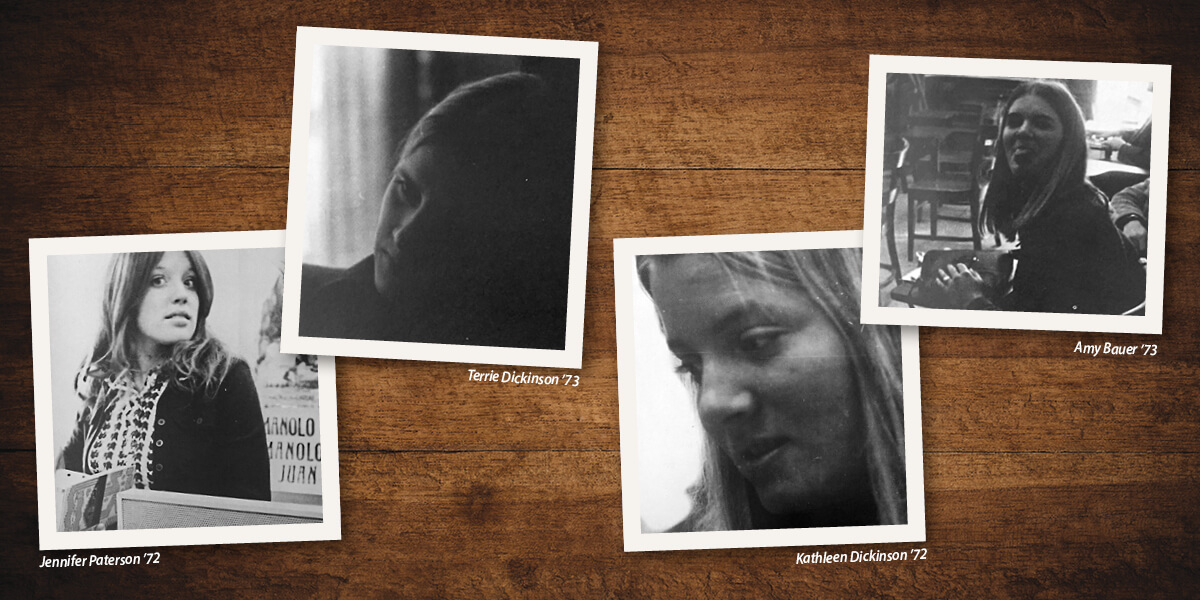
The fall of 1971
The first girls to arrive at CA came for various reasons, but many of them were like Boxer, who felt familiar with CA because she knew boys who were attending the school.
“I was very eager to go to CA,” Boxer says. “I wanted the academic challenge. It was such a small school at the time, and it seemed like there were so many things you could do.”
Terrie Dickinson Warren ’73 had just moved to Denver from suburban Chicago, and her mother felt the transition would go more easily for Terrie and her sister Kathleen Dickinson Tuscherer ’72 in a small private school.
“At CA, there were small classes, and you got to know the faculty, and they got to know you,” Warren remembers. “I just loved my classes.”
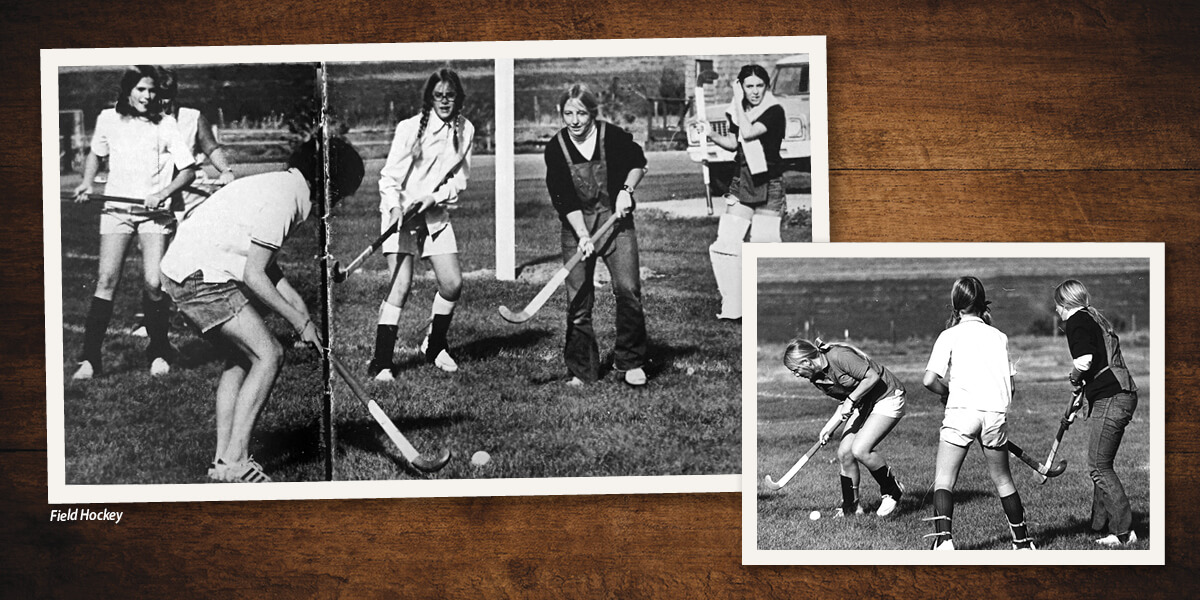
To the girls, the campus on the outskirts of the city, with its old cottonwood trees and abundant wildlife, seemed bucolic compared to the monolithic brick buildings many had transferred from. Each girl was assigned a dorm room (left over from boarding school days), so they had a place to change clothes to play sports. They shared bathrooms with the female teachers.
The inaugural cohort of girls was spread across three grades, so it was not uncommon for there to be only one girl sitting in a classroom full of boys.
“The boys were welcoming,” says Bley. “I had been going to school with boys my whole life, so it was no big deal for me to be the only girl in the room.”
“I think the boys were ready for this change,” adds Warren. “An all-male school was not representative of society-at-large, so they were really happy to have girls on campus.”
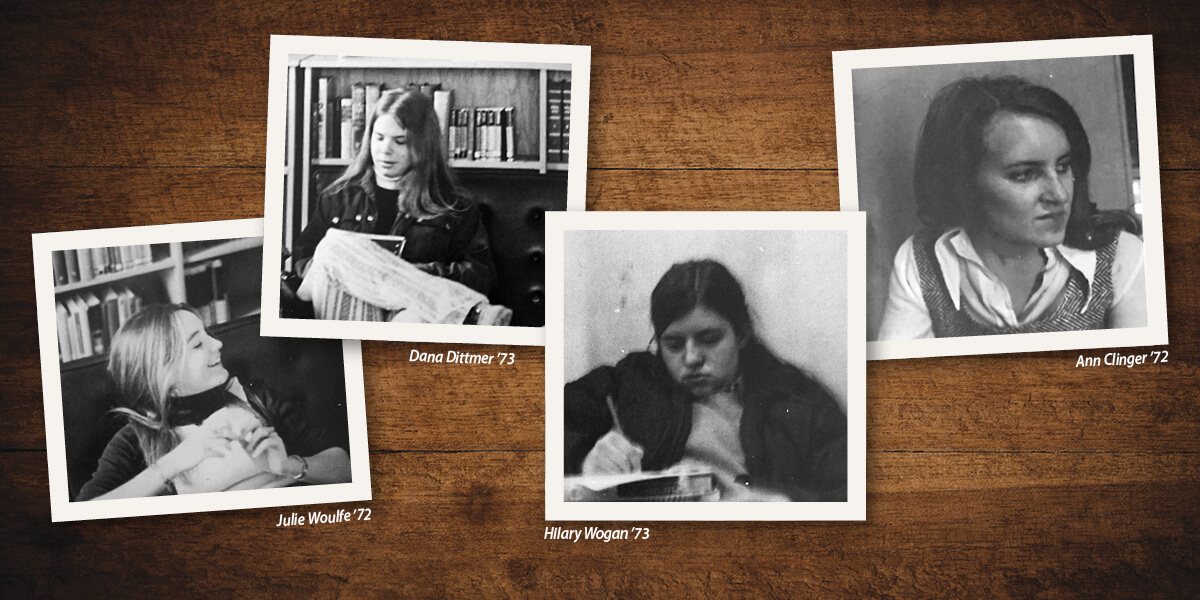
What was remarkable was just how unremarkable the arrival of the girls was for the boys.
“It didn’t really change the way I thought about CA,” says Jake Warde ’72, who had attended CA since Kindergarten. “I do remember that it made the school more vibrant instantaneously. Our Senior year was so much more fun because we could socialize with the girls.”
But Warde also remembers respecting the girls for the changes they brought to CA.
“It took courage for a young girl to come to an all-boys school,” Warde says. “The girls were great people, and they just fit right in.”
Like his classmates, Warde also remembers performing in A Midsummer Night’s Dream.
“I think I only had one line, and I forgot it during the play!” he says, laughing. “That’s how bad I was.”
One of the immediate changes brought about by the girls had to do with CA’s dress code. The boys were still required to wear blazers and ties, and they were not allowed to wear blue jeans.
“Everybody was pushing the boundaries of what was a tie and what was a coat,” says Warde. “The girls can wear pants, and we have to wear coats!”
The boys seized on that perceived inequity as leverage. and fairly quickly, their daily ties and blazers were a thing of the past.

New opportunities
Many of the pioneer girls praise the many ways CA offered opportunities to try new experiences in athletics, arts, academics, extracurricular activities, and travel.
“In a large public school, you had to do a sport, or you could be in theater, but you couldn’t do both,” says Bley. “At CA you could try anything.”
The pioneer girls started a Girls Lacrosse Team and a Field Hockey Team. “I always joke that I made all the Varsity teams,” Warren says. “That’s because we didn’t have enough girls for a Junior Varsity.”
Boxer enjoyed singing in the Glee Club and being the piano accompanist for the Sweet Adelines, the sister group to the boys ensemble, Catchers in the Rye. She was Co-Editor of the newspaper, along with Preston DuFauchard ’74. Warren also was an editor of the newspaper in her Senior year, an experience, she says, that “would not have happened somewhere else.”
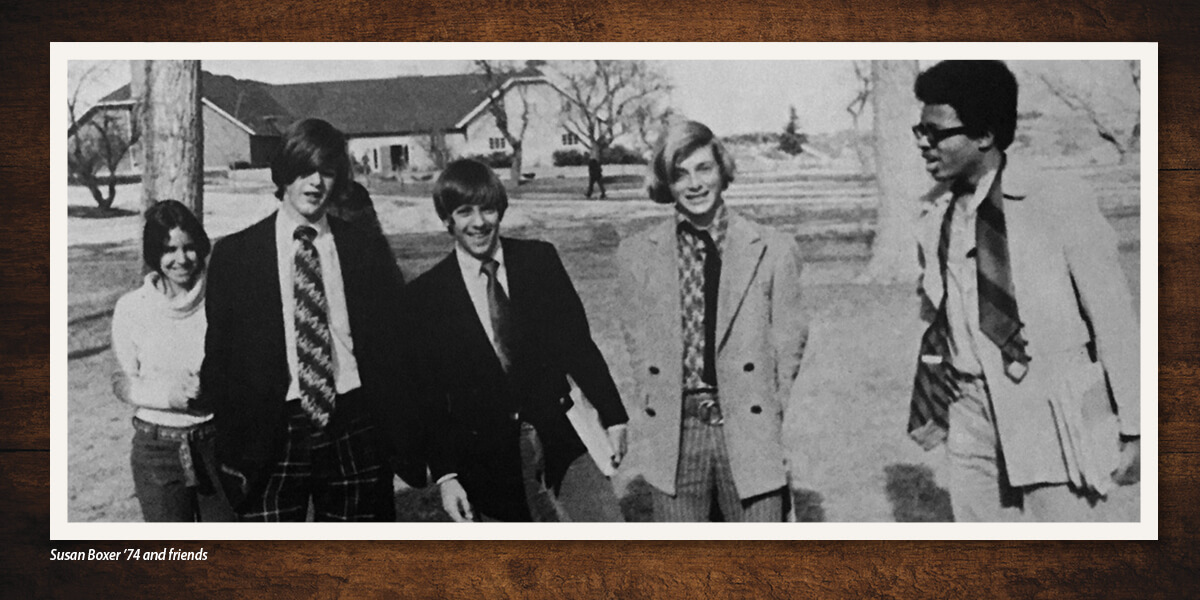
All of the pioneer girls agree that coming to CA meant taking a major step up academically.
“Excelling academically meant a lot to me and my family, so I was competitive,” says Boxer. “The teachers were inspired and inspiring, and they were interested in their subjects. I felt proud to represent girls in a smart way.” Boxer was one of five students in her graduating class to attend Stanford University.
Bley remembers the advantage of being in CA’s small classes after transferring from a school where classes often had up to 30 students. She recalls days spent in the wood-paneled library, with a statue of Icarus hanging above her, studying for her favorite course, which was Russian History.
After 50 years, Warren can still list names of teachers who had an impact on her and even describe their lesson plans. “The teachers cared that I succeeded,” she says. “My French teacher, Jean Lemire Dahlman, aka Madame Lachkar, convinced me to become an au pair in France after I graduated. She pushed me, called me on my excuses, and made me a much better student.”
In short, the girls slipped right into a program of rigorous academics already in place. “CA was a great place to learn,” says Warde. “I was a serious student, and I always felt the school was a good match for me.”
Much of the learning took place during experiences outside the classroom, just as it still does today. Boxer remembers traveling to England with the CA Glee Club and to France with a group led by their French teacher, experiences that “really opened up the world for me.”
The CA boys and girls who studied and traveled together during the early ’70s came from a variety of backgrounds. Some were boarding school students who had found a place to live locally so they could stay at CA. “One of the things I liked about my time at CA was the diverse population of students I met,” says Bley. “They were from all around the country and from varied backgrounds, and I would not have had the opportunity to know them if I had not gone to CA.”
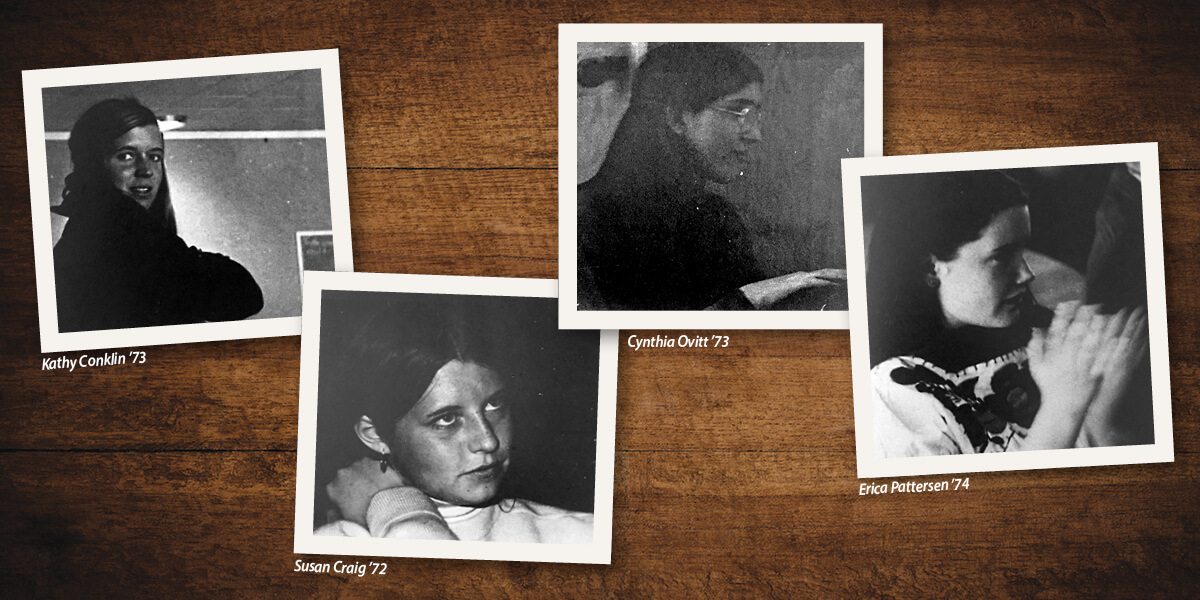
Lifelong friendships
CA has come a long way since 1972, when the first class of girls to graduate from CA wore long dresses of any color and received their diplomas in a former airplane hangar that was being used as a combination gym and theater. They thought they would remain friends forever. And they have.
“I have all these women and guys I am still friends with,” says Bley. “They have stayed with me for the rest of my life.”
Warren plays golf with a foursome made up of three male CA alumni—and her. She remembers a recent mini-reunion, which was planned as a quick lunch and lasted through three hours of “great people and great memories.” She also serves on the Alumni Board, a way to create an “official connection” to CA.
“I wanted to give back to CA because the school gave me so much,” she says. “It’s a way to reconnect with people and make sure my era remains represented.”
Boxer has remained friendly with her English teacher, Renée Ruderman, and with Dahlman, who was also her French teacher. “It was important to me that there were creative and vibrant women teachers at CA,” she says.
The pioneer girls remain grateful to Head of School Chuck Froelicher for opening the doors and giving them the same opportunities afforded to boys.
“I felt strongly from him that I was important to the school,” says Boxer. “I felt that our presence meant a lot to him.”
“I call myself a pioneer, but when I look back, I just felt so welcome,” adds Warren. “Girls were not second-class citizens 50 years ago. Nor were we given special privileges. I felt respected and cared for.”
